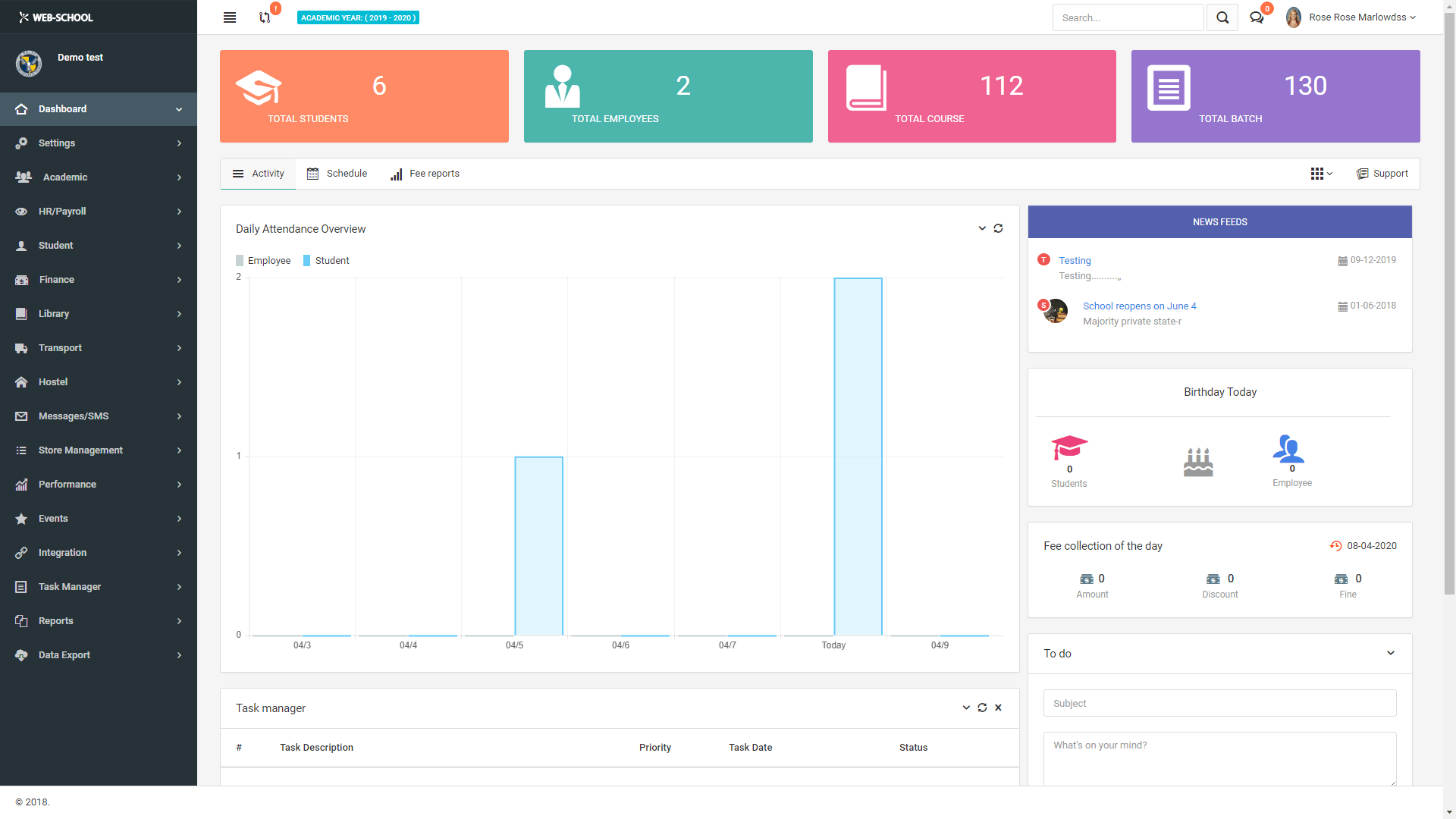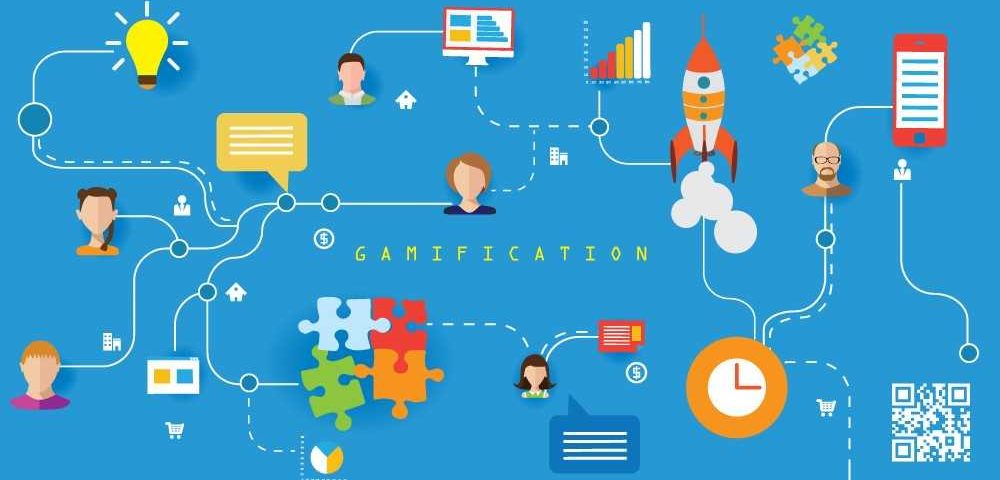
Digitized Era and its Impact on Education
February 23, 2020
How School Management Systems Help Implement ERP in Educational Institutions
April 8, 2020The previous generation of parents perceived games as the bane of their children’s academic pursuits. The pedagogic institutions frowned upon unconventional methods of learning. The IT era has eradicated such biases and successfully introduced advanced models of education founded on gaming environments. Here’s all you need to know about gamification in education as a popular trend in learning.
What is Gamification?
Gamification is the method of introducing academic paradigms and techniques in unrelated environments as a way to induce and enhance performance and competence. It is integrated into existing learning models in the form of point-systems, leaderboards and one-on-one competitions as a method to fuel the competitive spirit and help cultivate leadership qualities. Gamification is not exclusive to education but also has shown leverage when introduced in variegated spheres of life, including medical care and commerce.
Gamification has already permeated into all walks of life. When we create our profile in a job search portal, and complete filling our information step-by-step until we achieve a perfect score, we participate in a casual instance of game-like design. The levelling up aspects until the completion stage emulates a niche common in a gaming environment.
Introduction of gamification in education as a mode of learning.
Gamification was a commercial proposal made in 2016 as a means to deobfuscate the dissemination of knowledge and make learning an enjoyable experience. Further studies on the suggestion relayed it as a profitable undertaking with scope for rampant investment, research and reception. The most common gamification methodologies can be seen in
- Grading systems with leaderboards
- Reward systems with stars, badges, prizes and other merits.
The competitive ambience sparks ambition and incites the motivation not just to perform well but outdo the opponents. Every task assigned will be handled as a challenge to be thwarted to secure the highest rank on the leaderboard.
Game-based learning versus gamification.
Gamification should not be confused with game-based learning. In a game-based learning environment, the student relies on pre-existing games and game-story. The context of the game is immutable, and the students partake in activities related to developing their own game within the available story.
Gamification is different from game-based learning because it involves the creation of games on educational topics. Its goal is to impart knowledge to the “player” (student) through completion of the delegated “tasks”. The didactic experience is diluted as an entertaining experience and the learner partakes voluntarily in the educational endeavour. In the process of gamification, the ordeal of learning transforms into enjoyable cerebral challenges which demand the player’s focus, determination and high level of performance.
Why should gamification be deemed as a practical learning tool?
Gamification can boost the assimilation of information and performance in many ways.
- Engagement: Gamification introduces the element of mystery at various phases of the game. For instance, the puzzle challenges involve a hunt for the missing pieces needed to complete it. The learner is coerced to find the answer using the information provided, facilitating an intellectual engagement within the game niche.
- Reflex and Prompt: From the beginning to the end of a challenge, the player is forced into surroundings which require prompt and unhesitant movements and actions. It harnesses the learners’ rational instincts and condition reflexes to unanticipated stimuli. For instance, within a given time-frame the task to seek a hidden item or emerge out of a maze is expected of the learner, which involves analytical responses to questions, rational elimination of odds or solving an equation. Endless scenarios of challenges can be incorporated into the context by way of gamification.
- The pleasure of winning: Gamification in education is premised on the innate human penchant for winning and the satisfaction derived from solving problems and overcoming hurdles using own merits.
- Ranks, Lives and Levels: Accumulating points to level up is the most thrilling aspect for a gamer. With every mission accomplished, the level of difficulty increases as well as the risk of losing the limited supply of “lives”. The learner has to exercise caution and make judicious moves to gather items and complete each task. The higher the risk, the greater the sense of challenge and more enhanced the engagement with the game environment; faltering would cost a life and poses the risk of starting over.
- Unpredictability: The inability to foresee what lies ahead creates tension and the pressure to stay alert—solving a challenge that involves various puzzles of different styles intensifies the cerebral engagement with the game. The best performance (quick and impeccable solutions) is necessary to cross the level or the consequence would be unfavourable to accumulating points and securing higher ranks.
- Maps and Progress Charts: Gamification in education has countless possibilities and scopes. For instance, it can be used as a medium to fuel motivation in learners by showing progress on maps that scale the movements and activities while simultaneously indicating the proximity to the destination or goal.
- Cathartic Release: Learning through games is more invigorating to the senses, intricately linking the emotions of the learner to all the aspects of the game, The advent of a setback, or collecting a rare item, solving a puzzle, levelling up, starting over, losing a life or accomplishing a difficult task come with accompanying emotions such as anger, misery, joy, thrill, sparks of ambition, motivation and the desire to improve and win—emotional participation and release is higher in gamification models of learning than traditional text-book models.
How can gamification be organically implemented in the existing educational models?
The introduction of game-based learning design is easy and time-efficient.
- Grading System: Gamification can be integrated into the pre-existing methods of student evaluation. The results could be published as ranks with top scores or grouping the best performers into various leaderboards. It encourages the learners’ will to improve continuously.
- Merit System: Game designs can help curate a new paradigm of crediting merits like the distribution of points, rewards, awards and badges. Just like collecting points in the game, learners would strive to accumulate as many badges and trophies of merit.
- Healthy competition: In the absence of a rival who threatens one’s existence as the topper, even the most competent student might slip into a sense of complacency. The rigorous environment created by active competitions, the numerous leaderboards and rankings will incessantly fire learners with the competitive energy to outperform one’s opponents.
Why is moderation necessary?
- High cost: Gamification is resource-intensive and requires more investments from the ends of both the developers and the users. As a result, it stagnates the reach and accessibility within specific segments of the learning group.
- Gadget dependency: Learning in extreme game intensive platforms makes the students heavily reliant on gadgets and computers. Consequently, a generation of technology-dependent students will cross the society who have little analytical, motor and life skills but show more mechanical influence and behavioural patterns.
- Competitive vendetta: Competition, although when introduced moderately motivates learners, excessive gamification in educational b will create a rivalry, friction and associated tension between learners partaking in the competition both online and offline.
Gamification embodies a technological renaissance as it entails the simplification of learning processes by delivering it in manners enjoyable to learners, Information is exchanged and retained faster concomitantly cultivating various real-world skills to the player. It also visibly reduces the stress pertaining to frequent class tests.Although exposure to different environments and opportunities to role-play are higher, reclusion from social interactions and the tendency to dangerously undermine real word problems are its most imminent drawbacks. A symbiotic relationship between traditional leading models with advanced technological models like gamification is encouraged to enjoy the best of both worlds.




